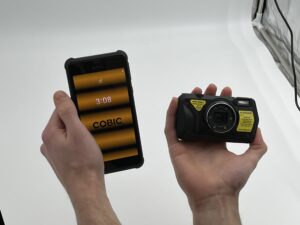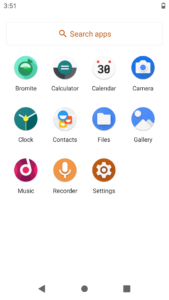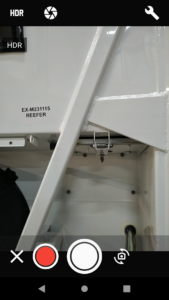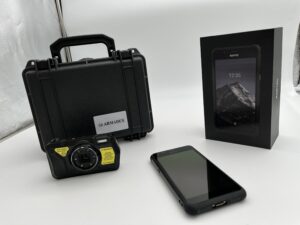Address:
Tinstraat 43
2984 AN, Ridderkerk
The Netherlands
Contact:
info@cobic-ex.com
Phone: +316 41509641
Other details:
Cobic B.V.
CoC: 86359924
Explosion proof cameras are often used in explosive atmospheres to protect people and equipment against explosion hazards. Most people working in for example the Oil & Gas, Pharmacy, or the Food industry will be familiar with this type of hazardous area equipment. An explosion proof camera is especially useful for reporting when conducting maintenance or inspections because images and videos can be shared with engineers and managers.
Cobic-Ex offers two excellent options: The Armadex OZC 2 and the Bartec Pixavi Cam. But which one is best for your needs? Let’s jump in and compare the pros and cons of both explosion proof cameras.

The Bartec Pixavi Cam is suited for Zone 1/21 (Gas or Dust). The OZC 2 is certified for use in ATEX Zone 2 (Gas).
The Armadex OZC 2 is based on the European Directive, but is also frequently used in other countries. The Bartec Pixavi has global certifications in addition to that, namely IECEx, NEC & ATEX.
The Armadex explosion proof camera is a traditional digital camera with physical buttons, while the Bartec Pixavi Cam is a smartphone without google apps.
Both cameras feature 4K recording and high-image quality for professional results.
Don’t be misled by the fact that the Bartec Pixavi Cam is based on a smartphone, this is a very high-quality and capable hazardous area camera. It features 4K filming & a decent 12.2 Megapixel camera with 8x digital zoom. Despite its compact size and modest looks, this camera is fully rugged and can be operated with gloves on.
What makes this explosion proof camera special in comparison are its globally recognized certifications: namely ATEX (Europe), IECEx (Global) & NEC (North America). In addition to that the Pixavi Cam is certified for use in Gas & Dust explosive atmospheres up to Zone 1/21. Some industrial plants require this as opposed to the Armadex OZC 2, which is certified for Zone 2 only. This of course depends on the local zone classification.
Other notable pros are wireless data transfer, slow-motion filming and 64 GB storage out-of-the-box. Be aware that this is not a smartphone, all apps are disabled. A regular smartphone version is available, at a premium price.


The Armadex OZC 2 is more of a traditional explosion proof camera, with physical buttons and a rugged body. Just like the Bartec Pixavi Cam, the OZC 2 is perfectly operable with gloves on.
When it comes to image quality, the Armadex device takes the prize when it comes to still images. At 20 MP the resolution is significantly higher, and the lens can better capture light and details. The OZC 2 also features 4K filming, but it does not offer 120 fps slow-motion filming which is a thing to keep in mind.
Another major pro is the 40.5x intelligent zoom function, combining both digital and optical zoom functionality. Users say they love using the zoom when trying to read labels on pipes or machinery that are out of reach.
The only real downsides compared to the Bartec explosion proof camera are its lack of global certifications, no slow-motion function and no wireless data-transfer.
| Attributes | Bartec Pixavi Cam | Armadex Ex-M OZC 2 |
| Price | € 2345,- | € 1598,- |
| Certifications
– Hazardous area classification – Location |
ATEX: Zone 1/21 II 2G Ex ib IIC T4 Gb II I 2D Ex ib IIIC T135°C Db IP68IECEx:Ex ib IIC T4 Gb Ex ib IIIC T135°C Db IP68NEC:Class I, Zone 0, AEx ia IIC T4 Ga |
ATEX: Zone 2
II 3G Ex h ic IIC T4 Gc |
| Photos | 12.2MP back camera
8 MP Front camera |
Approximately 20 MP |
| Video | 4K Recording | 4K Recording |
| User Interface | Android, Touch screen | Physical buttons |
| Zoom | Digital Zoom 8x | Optical Zoom 5x
Digital Zoom 8.1x Intelligent Zoom 40.5x |
| Accessibility | Stylus, bare or gloved fingertip input. | Rugged Buttons, Suitable for use with gloves. |
| Toughness and IP rating | Rugged
IP68 |
Drop Resistant up to 2.1m
IP66 |
| Operating Temperature | -20 °C to +60 °C
(-4 °F to +140 °F) |
-10 °C to +40 °C
(14 °F to +104 °F) |
| Connectivity | Wi-Fi
Bluetooth GPS USB 2.0 |
SD-Card |
| Battery Life | 3200mAh (Above Average)
Rechargeable and Replaceable Battery |
260 minutes
Rechargeable and Replaceable Battery |
| Accessories | Battery
Screen protector Charger Charging Cable Battery Tool SIM/SD Tray Ejector Tool Quick Start Guide (EN) |
Li-ion battery
NP-45S AC Power Adapter USB Cable Hand strap User Manual |
| Warranty | 12 Months | 12 Months |
| Storage and Memory | 64GB Storage | 27MB Storage, Extendable up to 512GB with SD-card. |
| Special Features | Slow-Motion (120Fps) and Timelapse
Continuous Shot Clock and Calculator Regular Security Updates |
6 LED Ring Light
Intelligent Zoom 40.5x No Internet connection means safe data. |

As you can tell from the table, both products are very similar. In terms of high-quality images and videos, you can’t go wrong with either one. The Armadex OZC 2 might have the edge when it comes to zoom functionality, but the same can be said about Bartec’s slow-motion filming. Both devices are rugged and fully operable with gloves, offering both build quality and accessibility in the field.
We feel it’s a safe bet to choose your camera based on the certification that your hazardous area requires – since safety and compliance are most important after all. If you are working in Zone 2, we recommend the less expensive Armadex OZC 2. If you are working in Zone 1/21, go with the Bartec Pixavi Cam. We are confident in saying that both explosion proof cameras are extremely capable and will serve you well.